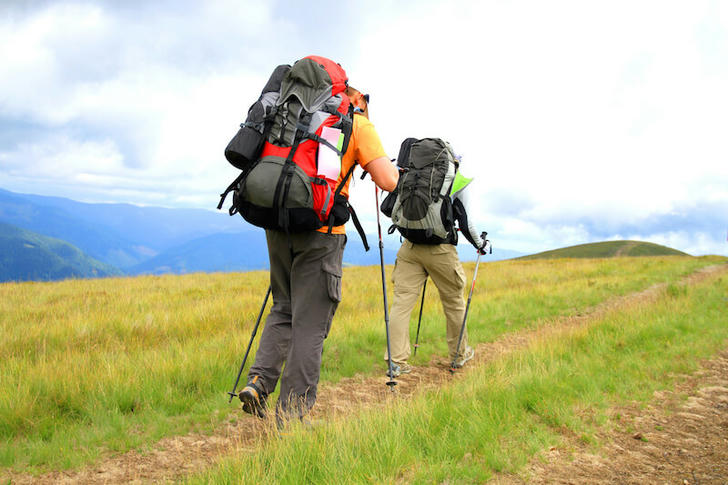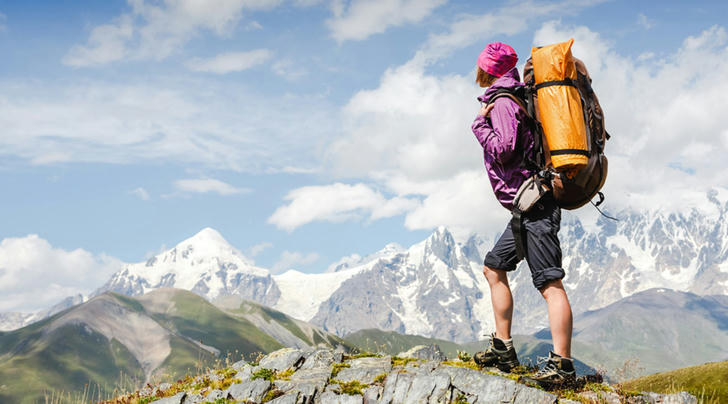How to Plan the Perfect Backpacking Trip: 5 Essential Tips
Backpacking is an adventure that combines the thrill of exploration with the simplicity of traveling light. Whether you're trekking through the wilderness, navigating foreign cities, or exploring remote destinations, a backpacking trip can be life-changing. However, planning such a trip requires careful consideration of many factors to ensure that it’s both enjoyable and successful. In this guide, we’ll share five essential tips for planning the perfect backpacking trip, providing clear and actionable steps that will help you make the most of your adventure.

1. Choose the Right Destination
The first and perhaps most crucial step in planning your backpacking trip is selecting the right destination. The ideal location will depend on your interests, experience, and fitness level. Whether you're after scenic hiking trails, cultural immersion, or simply a peaceful escape, there's a destination that suits your needs.
Key Considerations:
Research destinations. based on your interests. If you're a nature lover, consider national parks or trekking routes like the Appalachian Trail in the United States or the Inca Trail in Peru. For cultural exploration, cities like Kyoto, Japan, or Cusco, Peru, offer deep historical significance and unique cultural experiences.
Consider your physical condition. and experience level. If you're a beginner, choose destinations with well-marked trails and a reasonable climate. Advanced backpackers may enjoy challenging hikes, such as the Tour du Mont Blanc in Europe or Everest Base Camp in Nepal.
Climate and season. play a major role. Research the best times to visit your destination, considering factors like temperature, rainfall, and tourist crowds.
Example: Sarah, a seasoned backpacker, chose the multi-day trek through the Himalayas to Everest Base Camp for her most recent adventure. She carefully studied the terrain, weather, and needed permits before committing, ensuring she was prepared for the physical demands of the hike.
2. Pack Light, But Pack Smart
Backpacking is all about traveling light, but it's essential to bring along the right gear. Overpacking can slow you down and leave you feeling weighed down, but underpacking can lead to discomfort or even danger.
Key Considerations:
Prioritize the essentials. Only pack items you'll truly need. A well-fitted backpack, lightweight clothing, durable shoes, and a good sleeping bag are crucial for comfort and safety. Don’t forget a basic first aid kit, a headlamp, a multi-tool, and your personal identification.
Consider packing techniques. Use compression sacks or packing cubes to organize your gear and maximize space. It helps you stay organized and ensures that your items are easily accessible.
Test your gear before the trip. A comfortable backpack and shoes are essential for a successful backpacking experience. Try them out on shorter hikes to ensure they fit properly and don’t cause any discomfort.
Example: Ben, who embarked on a weeklong trek through the Scottish Highlands, made sure to bring only essential items like a lightweight tent, layered clothing for varying weather conditions, and a portable water filter. By focusing on quality and versatility, he was able to minimize his pack weight while staying prepared for any situation.

3. Create a Flexible Itinerary
While it’s tempting to plan every moment of your backpacking trip down to the minute, flexibility is key. A rigid itinerary can cause stress and prevent you from enjoying unexpected discoveries along the way. A well-planned yet adaptable schedule will allow you to experience the journey fully.
Key Considerations:
Allow for spontaneous activities. While you may have a set start and end point, leave room in your itinerary for unplanned adventures. Explore side trails, take a detour to a local market, or stay in a town longer than expected.
Have a rough outline. Plan your major stops and destinations, but don’t feel the need to follow the schedule strictly. This flexibility will ensure that you don’t miss out on hidden gems and opportunities.
Balance rest days. Backpacking can be physically demanding, so schedule downtime to recover and recharge. Take a break in a scenic spot or spend a day in a town to experience local culture.
Example: Lily, who backpacked through Southeast Asia, initially had a tight schedule with stops in Thailand, Cambodia, and Vietnam. However, after meeting a fellow traveler in Cambodia, she decided to extend her stay in Siem Reap to visit Angkor Wat at sunrise, which wasn’t originally part of her plan.
4. Prepare for the Unexpected
When backpacking, things rarely go exactly as planned. Weather, transportation delays, or unexpected encounters can change your course at any time. Preparing for these potential challenges will help you stay calm and make the most of your journey.
Key Considerations:
Stay informed about your destination. Before you go, research common issues that travelers face in the area, such as political unrest, weather patterns, or transportation strikes. Keep an eye on current events, and have a backup plan in case something goes wrong.
Emergency preparedness. Know the location of nearby hospitals, embassies, and emergency contacts in case you need help. Keep copies of important documents, such as your passport and insurance details, in multiple locations.
Pack for all weather conditions. The weather can be unpredictable, especially if you're traveling to mountainous or tropical regions. Bring clothing for hot, cold, and wet conditions to stay comfortable no matter the circumstances.
Example: Tom and Rachel, who backpacked through the Andes, faced unexpected rainfall that made some trails impassable. However, they had packed rain gear and had researched alternative routes, allowing them to continue their adventure and enjoy their time in the mountains despite the challenges.

5. Embrace Local Culture and Meet Fellow Travelers
One of the greatest joys of backpacking is immersing yourself in new cultures and meeting people from all over the world. Embrace these experiences to enrich your journey and make lasting memories.
Key Considerations:
Engage with locals. Learn basic phrases in the local language, and be respectful of cultural norms. Engaging with locals can lead to unexpected friendships and give you an authentic perspective of the place you’re visiting.
Stay in hostels or communal accommodations. These are great places to meet fellow travelers. Share stories, exchange tips, and even join others for activities.
Join group tours or events. Many destinations offer group activities like cooking classes, guided hikes, or local festivals, which are perfect for meeting others and learning more about the culture.
Example: While backpacking through New Zealand, Claire joined a group of other backpackers for a guided tour of the famous Tongariro Crossing. This not only allowed her to experience one of the country's most iconic hikes, but also connected her with travelers who shared similar interests.

Conclusion
A successful backpacking trip is all about preparation, flexibility, and embracing the journey. By choosing the right destination, packing smart, creating a flexible itinerary, preparing for the unexpected, and immersing yourself in local culture, you’ll set yourself up for a memorable adventure. Whether you're trekking through the mountains, exploring foreign cities, or relaxing on remote beaches, following these five tips will help you plan the perfect backpacking trip that meets your needs and exceeds your expectations. Happy travels!
